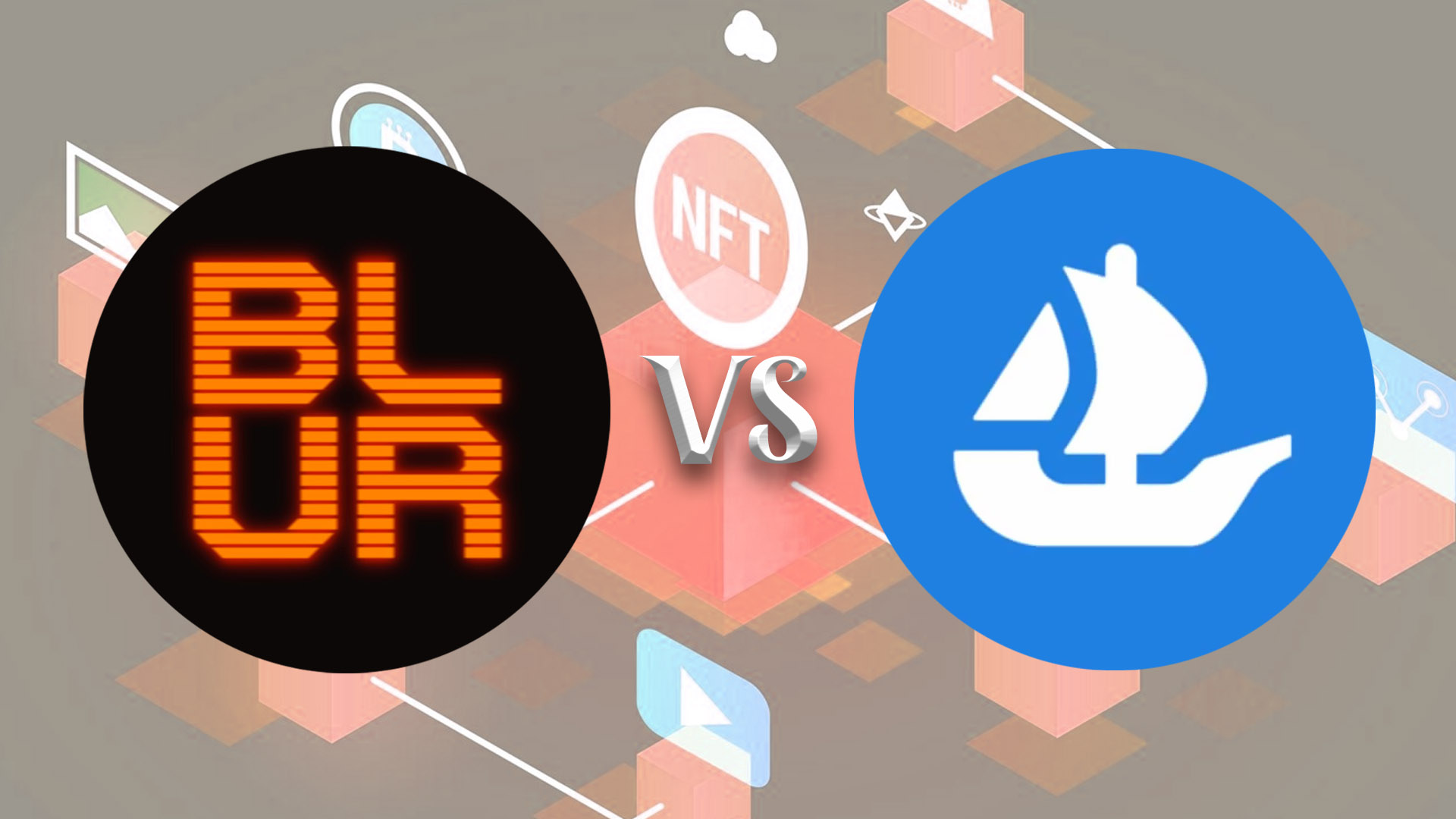- Blur has dominated OpenSea in terms of trading volume, while it boasts a large number of traders.
- OpenSea’s outstanding historical performance still holds it above Blur as a leading NFT marketplace.
With the emergence of non-fungible tokens (NFTs) in the world of cryptocurrencies, they have shown remarkable performance across the DeFi landscape. While OpenSea is a leading marketplace for NFT trades, Blur came across as a substitute option with its enhanced features and user-centric architecture. This platform has acquired a trading volume of $1.24 Billion, while OpenSea lagged behind with $383 Million as an aftereffect of the $BLUR token launch, which led to this platform’s skyrocketing performance.
What Is Blur?
Blur is an Ethereum-based NFT marketplace that aims to serve professional traders via its revolutionary features like sweep and swipe and price-based sorting with low trading fees. This platform also aggregates NFTs from OpenSea that focus on retail users. It gained huge traction because, in the short term, it raised over $14 Million from world-class NFT traders and investors.
This platform enables the browsing and buying of non-fungible tokens (NFTs) with fast liquidity compared to other platforms. Batch-shelf, floor-sweep and order book NFT transactions are additional features of this marketplace. This platform is best for professional traders because of its lower fees and user-friendly structure, which makes it more cost-efficient and convenient compared to other platforms.
What Is OpenSea?
This platform is one of the biggest NFT marketplaces that allow users to analyze, trade, mint and buy tokens. This marketplace was founded way before people actually knew about crypto or NFTs. It’s developed over the Ethereum blockchain while being a home for some big NFT projects like CryptoPunks, Bored Ape Yacht Club, and Clone X.
This platform supports several digital assets like art, game items, and metaverse (virtual) real estate as well. It provides an interactive interface that makes the creation and listing of digital assets easier. Buyers can easily purchase these assets in exchange for other cryptocurrencies such as Bitcoin and Ethereum.
On the other hand, OpenSea provides auctions, bidding, and digital asset’s price setting features that could be more helpful for crypto traders. Furthermore, its strong community has a well-established base of artists, traders, and investors who contribute to the platform’s growth through active participation. But OpenSea doesn’t have any native tokens and that’s the only limitation of this platform.
Blur vs. OpenSea
OpenSea was introduced in 2017 and has dominated as one of the best NFT marketplaces till now. Its user-friendly interface and offering of features made it one of the preferred choices among crypto enthusiasts. The LooksRare platform was assumed to be a major challenge to this platform. But after its airdrop, it could not hold a positive graph. This limitation led to the introduction of Blur NFT Marketplace and its completely different approach.
The major difference between both platforms is their targeted audience. Where OpenSea aims to provide these services to everyone, Blur focuses on Whale traders with different approaches to the platform’s loyalty. Its trading was incentivized because of its anticipated airdrop. Up until now, OpenSea has adopted various strategies to deal with Blur. It banned some NFT collections that appeared on Blur. While the rivalry platform was providing users with a choice about whether they wanted to pay royalty fees or not,
Conclusion
Blur might not be the first NFT marketplace to get introduced, but its features are providing opportunities like no other. OpenSea, on the other hand, serves well because of its user-friendly and publicly accessible interface. Even after so many functionalities on competitive platforms, OpenSea still leads as one of the biggest platforms for NFT trading. Both platforms have their own pros and cons. It completely depends on user preference, necessities, and where they want to invest.


